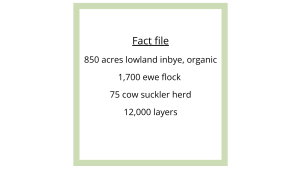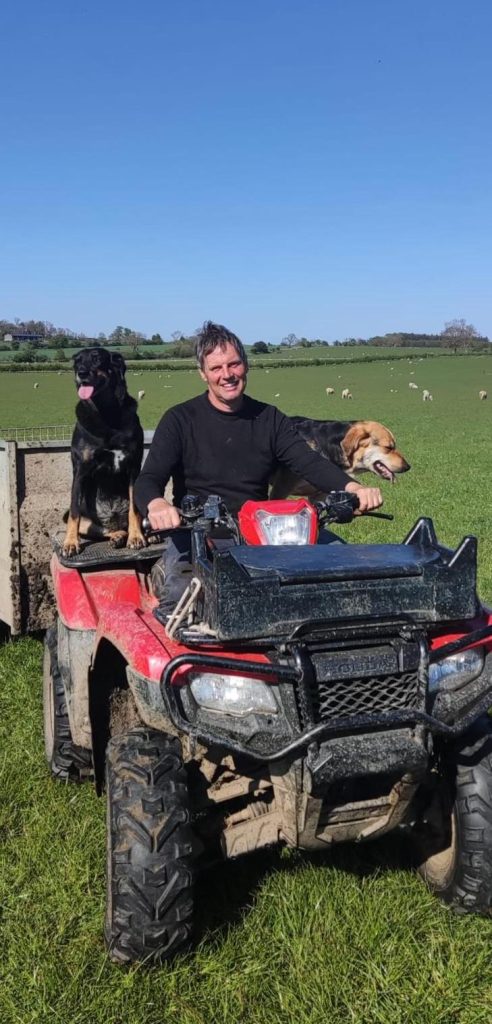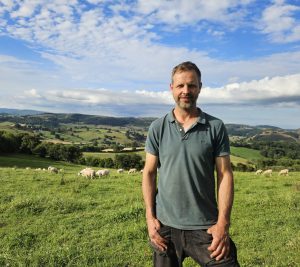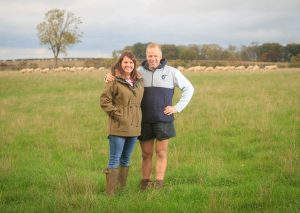with thanks to Graham Rutherford who farms in partnership with brother, Michael and father, George; Longhorsley, Northumberland
Keeping things simple is Graham Rutherford’s approach to his family’s mixed livestock business which includes a 1,700-ewe flock managed in a pure forage-based system. With 90% of ewes lambing within the first cycle, the entire crop of Primera cross lambs, apart from replacements, are sold off the farm within one week in August at an average 10 to 12 weeks of age.

“The flock averaged 160% lambs reared in 2024, around 10% of the 2,300 head went finished at a minimum 38kgs and the rest were sold store to one buyer at a price agreed on farm reflecting the early store market. A further 400 lambs were retained for replacement purposes,” he explains. “We’re planning the same arrangement this season.
“The system works since it minimises labour which is already in short supply, so cutting out gathering to weigh and dose has enabled us to improve our management time with the ewes and the poultry enterprise as well as time spent with family.
“We initially introduced that same time and labour-saving strategy at lambing time. We lamb the entire crop outdoors commencing 21 April and had been putting the flock to Continental rams, however we were looking for a terminal breed that would leave lambs with narrower shoulders for easier lambing. We also wanted to maximise the number reaching at least 38kgs finished weight within that narrow 12-week window.
Six years on and we’ve a string of 12 Primera rams.
“We used to use Continental sires until we read about the Primera in the press and then we heard more about the breed by word of mouth. We decided to invest and started off using them on the gimmers, these rams proved themselves so we agreed to stick with them, and the rest is history. Six years on and we’ve a string of 12 Primera rams,” he says.
“We’ve found Primera cross lambs are so easily lambed and they’ve got that get up and go, so we’ve been able to adopt a simple system going round the lambing paddocks just twice a day,” explains Graham who manages lambing with one other staff member.
While Primera genetics were originally from New Zealand, Graham says he has the reassurance they’ve been adopted to the UK climate by Innovis which can apply the necessary selection pressure. “It can get quite chilly at lambing, so that vigour is really important.
“We’ve also built up a trusted relationship over the years with Innovis; we know the rams are properly performance recorded so it’s possible to accurately predict how they’ll perform which is something we couldn’t be confident of achieving if we’d bought them out of the mart. We chose Elite performance recorded rams selected for ease of lambing EBVs. Longevity is great, they’ll last for up to six years. If we occasionally find there is an issue, then Innovis replaces, no bother.
“Ewes lamb on to clover rich swards in a set stocking regime with four to five ewes per acre, two to three weeks later we start to mob up and rotate gradually building up to 600 ewes per mob. It’s a system that reflects our adopted strategy – to sustainably maximise output,” says Graham.
“Once the entire crop has been sold, we introduce the ewes to a rotational grazing system, and eventually to the tup. We introduce 11 Primera rams to each mob; we’re aware it’s a rather conservative ratio and we’d happily run one ram to 100 ewes, however this is how we’re currently managing things and it works for us.”



